
![]()
Every Sunday, we bring together a collection of easy-reading articles from analytical to how-to to photo features in no particular order that did not make our regular daily coverage. Enjoy!
PetaPixel Contributor Blair Bunting Selected to Join Canon Explorers of Light – Phil Mistry

Canon USA Inc has announced on July 27 that it is adding five photographers to its famed Explorers of Light program: Blair Bunting, Laretta Houston, Krisanne Johnson, Natalie Keyssar, and Keith Ladzinski.
Blair Bunting has written for us on photographing athletes, cars, planes and trains. He has also contributed stories on iPhone photography, photographers’ mental health, creating a superball commercial, lens reviews, dealing with panic attacks during photo shoots, shooting an HIV prevention campaign, creating an ASU Football’s ad campaign, and more.
We caught up with him for a short interview.
The 5-Min Sunday Interview
Phil Mistry: We know you are an advertising photographer, but how did you specialize in professional athletes’ portraits for commercial sports campaigns?
Blair Bunting: It started when I was actually in college [pursuing a major in business and sociology]. I was helping out with a sports game, and one day I asked them if I could take a picture of one of the football players. I was 18 or 19 years old, and the pictures were so good that Coca-Cola asked if we could do an entire campaign. That series that we created just with that one athlete and more athletes to follow paid for my entire college tuition. This was in 2002. When that image got out, I was contacted by Getty Images to photograph Paris Hilton, and from then on, all the Discovery channel shows. I was photographing them even before I was out of college.

PM: How much of a photo is lighting?
BB: Everything. There is nothing else in my honest opinion. I truly feel that there is no reason to photograph something in bad light. If a monumental situation is happening in front of you and it is in bad light, you should put the camera down and watch it. I think light is everything and should be everything to us. I dream about light. My mind is always occupied with what light will do to specific subjects. It’s kind of what my heart is— it’s light.
PM: Which was your first digital camera?
BB: It was a Canon D30 right after it came out, and it was Canon’s first [2006] digital camera [DSLR], and I let it teach me how to do photography. I could not even afford a card reader, so I would plug it directly into the computer. It took forever [with a 512 MB Microdrive] but that was the only way I could do it.
I have an original Canon1D still to this day in mint condition, and I shoot it quite a bit. I am shooting a train series with it. In Nov, the Canon 1D turns 20 years, and I have been shooting a series to show that it still holds up.
PM: If you had to shoot for a whole year with only one lens, which would you choose?
BB: My current lens that lives on my camera is the Canon RF 24-70mm f/2.8 L IS USM. I love that lens; it’s incredible. But I also love the Canon RF 28-70mm f/2 L USM The thing there is … that’s it’s a little heavy. And, if I can keep only one lens, it is going to be the 24-70mm, but I think that something that has really opened my eyes is how strong the new primes are, the Canon RF 50mm f/1.2 L USM and the Canon RF 85mm f/1.2 L USM. I usually would shoot with the zoom when going out to the forest or shooting trains, or even on set. But I have started to explore with 50mm 1.2 at least, and it’s an absolute joy to use, one of the nicest lens characters that I have seen, and that’s kind of a rarity to have lens character and sharpness all together – it’s unheard of. I am going to say 24-70, 2.8 but that’s with a heavy heart because there are other offerings too.
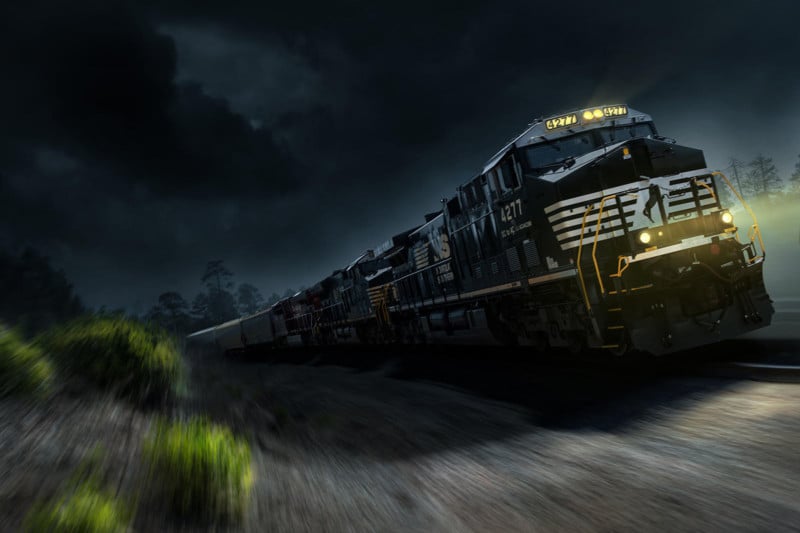
PM: You photograph athletes, fitness, automobiles, celebrities, and portraits. Which of these is the most personally satisfying?
BB: Trains [laughs]. You know…I love to shoot trains. It is extremely peaceful to me. I am often alone, and I love watching trains go by. When it comes to photographing athletes, that’s what I do professionally; that’s my career. When I shoot with an athlete or celebrity, I am always super excited and super pumped to be there, and I love creating together. But when it comes to something that puts my mind at a very calm place, it’s trains.
The Best Photos from the Tokyo Olympics – CNN (updated today)
There are close to 200 top images, and the link is regularly revised with new photos added.
The Lack of People of Color in Science Images Must be Fixed — Nature
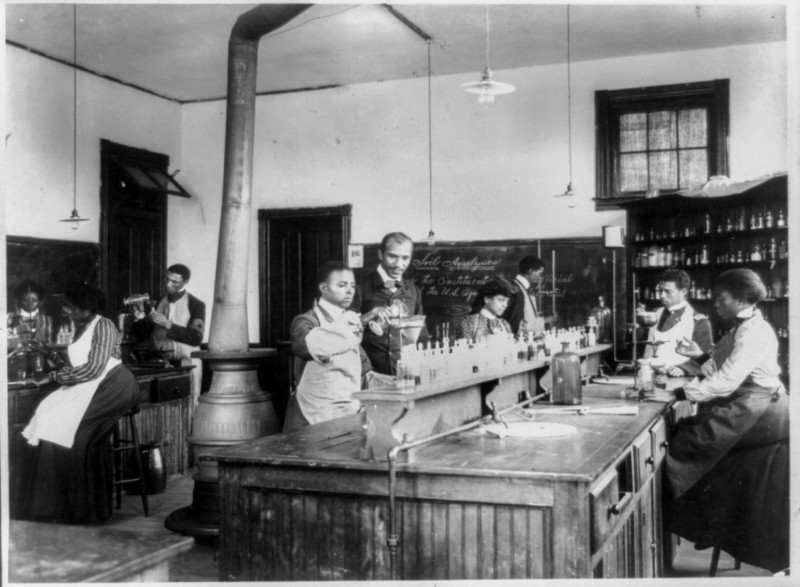
Recently, Nature needed an image of the physicist Elmer Imes, who, in 1918, became only the second African American to be awarded a Ph.D. in physics in the United States. His doctoral work provided early evidence of the quantum behavior of molecules. But university archives that Nature contacted did not have a copy of his photograph. Commercial photography agencies also had nothing. Low-resolution, grainy images do exist, but, shockingly, even the US Library of Congress in Washington DC — which holds images of many important scientists from the nation’s history — does not have a photograph.
Emilio Morenatti: ‘I Would Give up the Pulitzer to Have my Leg Back. I’d Even Burn my Work‘ – El Pais
Emilio Morenatti has always been keen on photographing disasters, wars, and conflicts. This led to his kidnapping in Gaza in 2006. In August 2009, he was attacked while traveling with the US military in Kandahar, Afghanistan and the explosion resulted in the loss of one foot.
Morenatti won this year’s Pulitzer Prize for Feature Photography for his series that documented the lives of the elderly in Spain who were struggling during the Coronavirus pandemic. The series includes the iconic photo of Agustina Cañamero, 82, and Pascual Pérez, 85, as they kissed and embraced through a plastic film screen (below) to avoid contracting or spreading the virus in a nursing home in Barcelona last year.
Read also: COVID Kiss: The Story Behind a Pulitzer-Winning Photo Series
How to Increase Instagram Followers for Photographers – SLR Lounge
- Post Consistent Content
- Use Your Account Sparingly for Marketing Sales and Products
- Find the Best Times to Post
Check out the link above for seven more tips and complete details.
Rocker Bryan Adams to Shoot 2022 Pirelli Calendar – Rappler
Proud to finally reveal that I’m the photographer for the 2022 Pirelli Calendar. More information on this exciting project to follow throughout the summer @Pirelli #PirelliCalendar #photobyadams pic.twitter.com/SMKmBb9Kvy
— Bryan Adams (@bryanadams) June 8, 2021
Canadian rocker and photographer Bryan Adams has been selected to shoot the 2022 Pirelli calendar for the Italian tire maker.
Adams, 61, has photographed celebrities including actor Mads Mikkelsen, rocker Mick Jagger, model Naomi Campbell, and Britain’s Queen Elizabeth. He has also published books of his photos, including one on injured British soldiers.
The Pirelli calendar has moved away from featuring images of scantily dressed models to more artistic themes featuring various celebrities in recent years.
Tennessee Wildlife Photographer Snaps Uncommon Shot: a Black Bear with Five Cubs – Knox News
An East Tennessee-based wildlife photographer Barry Spruce, who owns Cades Cove Gallery in Townsend, has captured images of something you don’t see every day: a mama black bear with five cubs.
Matt Cameron, the Tennessee Wildlife Resources Agency spokesperson, said he’s seen bears with four cubs but never five. Bill Stiver, the supervisory wildlife biologist for the Great Smoky Mountains National Park, said he’s only heard of a five-cub litter three times in his 30-year career.
Cuts at SFMOMA: Artists Gallery and Film Programs Will Close – Datebook San Francisco Chronicle

The San Francisco Museum of Modern Art is dissolving several longstanding and well-known programs, which include:
- Closure of the Artists Gallery at Fort Mason Center, a program that was established in 1946.
- The museum’s film program, which began in 1937 shortly after the opening of the museum and screens at the Phyllis Wattis Theater, will close after the fall season.
- The museum’s “Open Space” online publication focusing on interdisciplinary work by artists and writers and its “Raw Material” podcast will end after their fall seasons.
In addition to the confirmed closures and pandemic-related financial difficulties, SFMOMA has also been dealing with ongoing internal issues relating to the institution’s handling of race and bias.
When Photography Commodifies Poverty – Dhaka Times
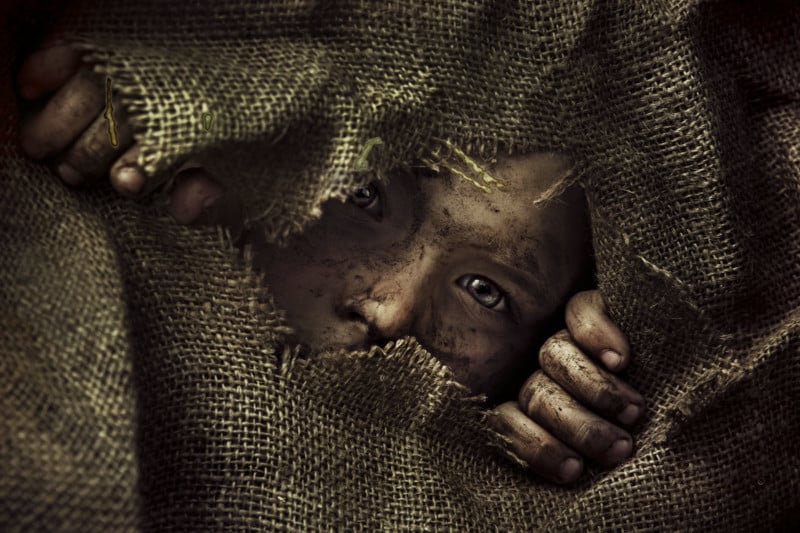
While it is essential to illustrate the challenges of a population, one must strive to tell stories that honor the subjects’ circumstances, preserves the agency and dignity.
A Photographer Reflected on Her 45-Year Career and What Has Changed — BuzzFeed
When Kathy Willens graduated from college, she thought she would end up becoming a starving artist. Instead, she became a photographer and worked for the Associated Press for nearly 45 years, winning multiple awards for her photos of breaking and general news, features, sports, fashion, and celebrities. At the end of Willens’s career, 95,000 of her images were on the AP Images website.
You can see more of her photos at the AP Blog.
14 Photography Composition Tips That Aren’t the Rule of Thirds – 500px Blog

Tip #1: Change your perspective
Tip #2: Provide a sense of scale
Tip #3: Try a frame within a frame
Check the link above for 11 more tips and complete details.
After 97 Years Wolfe’s Camera in Topeka Will Close its Doors Saturday – FOX 4
Read also: 138-Year-Old Dury’s Camera Store in Nashville Closes for Good
One Photographer. Eight cameras. 21,973 images. Photographing the Stanley Cup Championship – Tampa Bay Times
When Dirk Shadd shoots 21,973 photographs at the Stanley Cup final game in ice hockey, selecting one image for the cover for the new Tampa Bay Times’ coffee table book is both easier and harder.
Around his neck and shoulders, Shadd maneuvered three cameras, one with a longer lens for faraway action, one geared toward center ice, and a fisheye lens for up close.
“The fisheye is for when the guy eats the glass right in front of me,” Dirk says with a smile.
Along with the remote cameras, Shadd managed eight cameras during the finals.
Read also: Shooting the Stanley Cup Finals with Photojournalist Dirk Shadd
The World’s Greatest Sports Stars Shot by Walter Iooss Jr – The Guardian
One of the most outstanding sports photographers of all time, Walter Iooss Jr got his first commission for Sports Illustrated at 17 and went on to capture award-winning images of the sporting world’s biggest names, including Muhammad Ali, Michael Jordan, Tiger Woods and Kobe Bryant. His work is represented by The Bruce Silverstein Gallery, New York.
The 24 Most Expensive Photos That Sold for Millions – Pocket-Lint
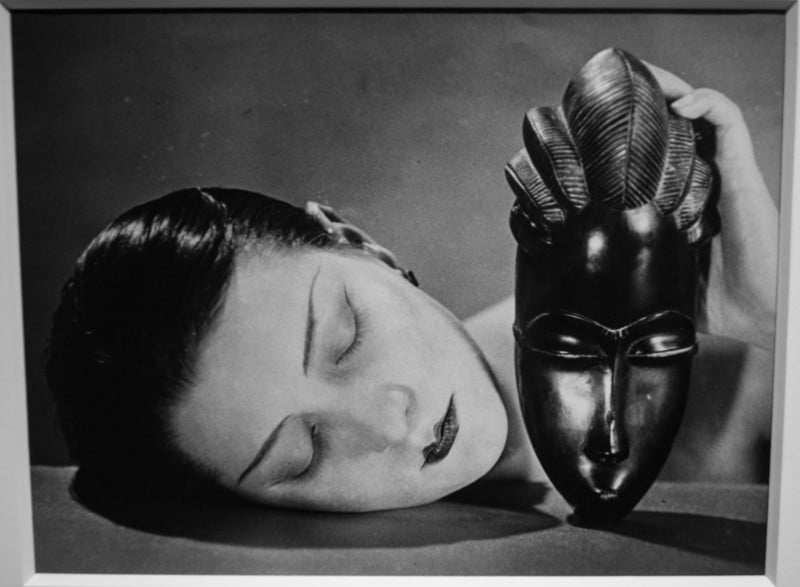
$1 million is pocket change compared to the sums paid for the photographs on this list. So let us take you through the 24 most expensive photographs ever sold.
Read also:
The 20 Most Expensive Photos Sold at Auction (As of 2017)
The Fine Art Photography Market’s Most Bankable Stars
Set of World’s Earliest Photos by Fox Talbot Sells for Staggering $1.96M
Gursky Photo of Rhine Sells for $4.3M, Becomes World’s Most Expensive Pic
Peter Lik Print Sells for $6.5 Million, Shattering Record for Most Expensive Photo
Two Young Boys in the Heart of LA Gangland: Merrick Morton’s Best Photograph – The Guardian
“I’ve taken shots of people pointing their guns at me – and one gang wanted to be photographed doing a drive-by shooting. I refused,” says photographer Merrick Morton to The Guardian. He is also a co-founder of The LA Six, a collective of street photographers documenting the subcultures of Los Angeles.
“I’ve been shooting street gangs in Los Angeles since the early 80s. For whatever reason, I always seemed to gravitate towards the gangs with the potential for violence… Gang members like having their pictures taken. They’re extremely proud of their area, and so by photographing them, you’re highlighting their neighborhood.”
Magnum Photographer Reflects the Fates of Scattered Former Soviet Republics — Magnum
Magnum photographer Jonas Bendiksen reflects on the first major body of work he made, which explored the fates of scattered former Soviet republics.
Bendiksen, at age 19, did a one-year internship at Magnum Photos’ London office. He then traveled to Russia to try and become a photographer. During the collapse of the Soviet Union, economic, political, and ethnic disparities gave birth to a series of lesser-known unrecognized republics, national aspirations, and legacies. In this scenario, he crafted a series of photo essays from 1999-2005 from which Satellites a book project was born.
Read also: Magnum Photographer Jonas Bendiksen Shares the Story Behind His Iconic ‘Satellites’ Shot
Everyone You love is Doing it: How the ‘Photo Dump‘ Took Over Instagram – Input
In the last month, there have been over 700,000 uses of the phrase “photo dump” or #photodump in the U.S.” Instagram, shares with Input.
Think of Instagram dumps as a collection of unrelated photos from different times or places with no explanation of why they were posted. There are photos of restaurant dishes, sunrises, casual selfies, and candid images that allegedly give you an overall “vibe.”
“Images included in a dump post are often unremarkable or unworthy of their own solo posts — which is exactly why we love them,” says the author. “Low-effort and haphazardly put together — hence the term “dump” — the gallery posts can be widely attributed to the events of 2020.
“As a result of the pandemic, which fueled a year of loss, grief, and overall melancholy, curating an Instagram feed has become a practice of the past. During quarantine — when no one had any Instagram-worthy events to attend or dress up for — photo dumps became especially popular.”
Quiz of the Week
- Most flashes are balanced to produce a daylight output. What Kelvin (K) is that approximately?
- If you add a grid on your softbox, will you increase or decrease the contrast?
- Which manufacturer lists nine terms on their site which are indicative of a gray market product?
- Is GNSS instead of GPS better for geolocation coordinates for the metadata of photos?
- Who first commercially marketed a mirrorless camera? Hint: it was in 2008.
Answers:
- 5500 Kelvin (K)
- Increase as now you’ve limited the number of angles the light rays can strike your subject.
- Nikon
- Yes
- Panasonic
Why I Like This Photo – Billie Weiss
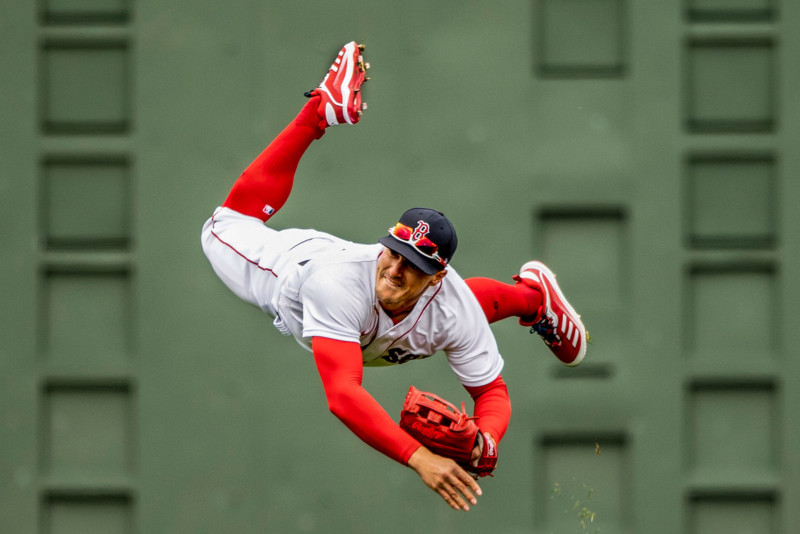
I like this photo because although it classifies as a sports action image, it’s different than what one would normally see from a take of images from a baseball game.
The photo came together in a nice way for a number of reasons. After watching Red Sox center fielder Kiké Hernandez take throwing drills during Spring Training earlier in the season, I noticed he had a habit of falling through to complete the throwing motion for the longer throws he was making.
With that knowledge, come game time, I knew to continue shooting through the sequence rather than stop at his point of release. The result was a freefalling pose with the illusion of an athlete suspended in midair.
The fortuitous, totally clean background eliminates any kind of distraction and gives the red color of the uniform and glove a canvas to stand out. Those elements combined with the pose come together to make for an impactful image.
The image was shot on a Nikon D6 with a Nikon 400mm f/2.8E FL ED VR lens. I think the photo catches your eye and grabs you in right away, which can be rare for true peak sports action images.
Billie Weiss is based in Boston, Massachusetts, where he is the Senior Manager of Photography for the Boston Red Sox. Since 2012, Weiss has documented numerous notable moments in Boston Red Sox history, including the 100th anniversary of Fenway Park, David Ortiz’s retirement, and two World Series championships in 2013 and 2018. Originally from Baltimore, Maryland, he holds an M.S. in Journalism from Boston University.
Quote of the Week
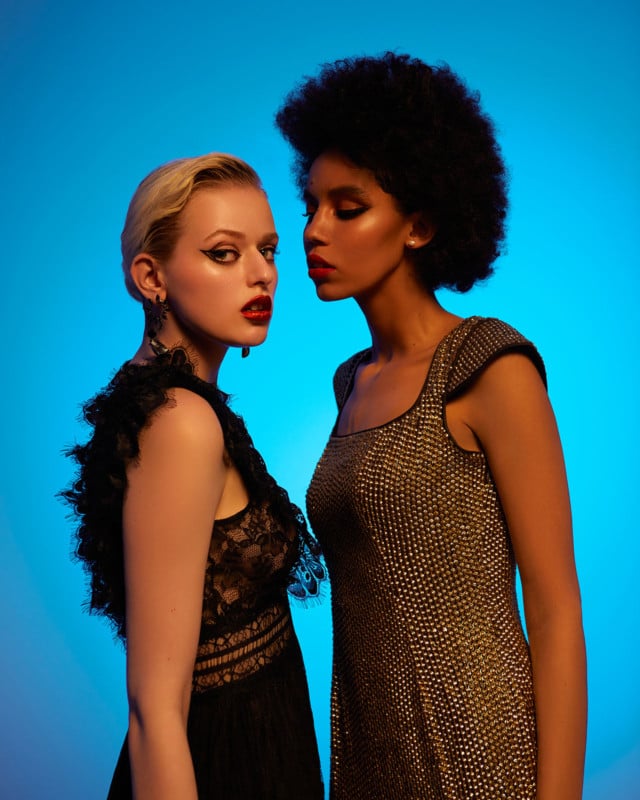
Photographic lighting is both physics and art. — Illya Ovchar
Illya Ovchar is a fashion and commercial photographer based in the heart of Eastern Europe in Budapest, Hungary. He is determined to create the perfect image, even if it means carrying 100+kg. (220 lb.) of equipment on location, but he hates packing up after a 12-hour shoot. Coffee is his creative fuel, but he is trying to drink less of it.
To see an archive of past issues of Great Reads in Photography, click here.
We welcome comments as well as suggestions. As we cannot possibly cover each and every source, if you see something interesting in your reading or local newspaper anywhere in the world, kindly forward the link to us here. ALL messages will be personally acknowledged.
About the author: Phil Mistry is a photographer and teacher based in Atlanta, GA. He started one of the first digital camera classes in New York City at The International Center of Photography in the 90s. He was the director and teacher for Sony/Popular Photography magazine’s Digital Days Workshops. You can reach him via email here.
Image credits: All photographs as credited and used with permission from the photographers or agencies.

